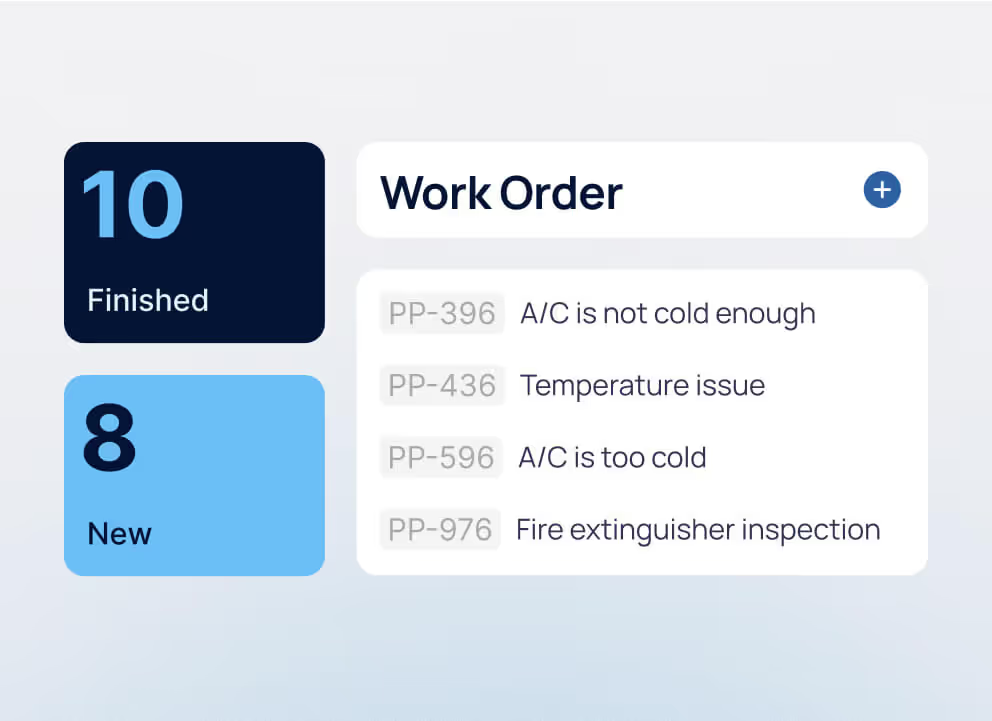The Importance of User Buy-In and Good Data – University of Wisconsin Stevens Point
The Importance of User Buy-In and Good Data – University of Wisconsin Stevens Point
In this post
%20(1).avif)
The Importance of User Buy-In and Good Data – University of Wisconsin Stevens Point
University of Wisconsin-Stevens Point found that leveraging user expertise was a pivotal key to their CMMS success.
The Client
A public university founded in 1894, University of Wisconsin-Stevens Point is located on a 406-acre campus consisting of 35 buildings. From world-class academic facilities to residence halls with Living-Learning communities, UW-Stevens Point has been ranked in the top 15 Midwest universities. The first university in the state to derive 100 percent of its electricity from renewable sources, the facilities services department continues to push for modernity and install state-of-the-art features across all 2.8 million square footage of space they serve.

Project Background and Challenges
An early adopter of TMA’s Desktop application, University of Wisconsin-Stevens Point has been a TMA Systems client since 1993. Tina Kramer, Deputy Chief Facilities Officer, recalls that many lessons were learned from the original data collection process and its shortcomings when using the solution interdepartmentally. The lack of data consolidation between facility branches led to uncoordinated efforts because of siloed historical asset and general facility information.

Leveraging User Expertise
In 2015, the university made the decision to move all operations data and processes from the desktop product to WebTMA, TMA’s browser-based CMMS solution, and Tina’s team had a very different approach to this upgrade.
With the gaps in the build-out and corresponding data in the desktop CMMS, the UW-Stevens Point facilities team knew the importance of input and buy-in from “boots on the ground” employees when determining the WebTMA implementation details. Tina gathered representatives from every department for early-stage data collection meetings – daily users from each division of the maintenance and facilities teams. In these monthly meetings, the department representatives made decisions on the data that needed to go into the solution, the flow of the work and processes from each department, and how they would all interact.
When building out WebTMA, the facilities team found that a collaborative effort directly with users-in-the-field is what made it successful for UW-Stevens Point. Tina’s experience with previous software applications informs her belief that early planning, leveraging the knowledge of users and making sure all departmental data is connected are vital to the success of an entire organization.


Download the eBook now
You’re all set!
Your eBook is on its way to your inbox. We hope it brings fresh insights and practical takeaways to help you get more from your maintenance operations.
Explore related resources
.avif)
.svg)
The Importance of User Buy-In and Good Data – University of Wisconsin Stevens Point
University of Wisconsin-Stevens Point found that leveraging user expertise was a pivotal key to their CMMS success.
The Client
A public university founded in 1894, University of Wisconsin-Stevens Point is located on a 406-acre campus consisting of 35 buildings. From world-class academic facilities to residence halls with Living-Learning communities, UW-Stevens Point has been ranked in the top 15 Midwest universities. The first university in the state to derive 100 percent of its electricity from renewable sources, the facilities services department continues to push for modernity and install state-of-the-art features across all 2.8 million square footage of space they serve.

Project Background and Challenges
An early adopter of TMA’s Desktop application, University of Wisconsin-Stevens Point has been a TMA Systems client since 1993. Tina Kramer, Deputy Chief Facilities Officer, recalls that many lessons were learned from the original data collection process and its shortcomings when using the solution interdepartmentally. The lack of data consolidation between facility branches led to uncoordinated efforts because of siloed historical asset and general facility information.

Leveraging User Expertise
In 2015, the university made the decision to move all operations data and processes from the desktop product to WebTMA, TMA’s browser-based CMMS solution, and Tina’s team had a very different approach to this upgrade.
With the gaps in the build-out and corresponding data in the desktop CMMS, the UW-Stevens Point facilities team knew the importance of input and buy-in from “boots on the ground” employees when determining the WebTMA implementation details. Tina gathered representatives from every department for early-stage data collection meetings – daily users from each division of the maintenance and facilities teams. In these monthly meetings, the department representatives made decisions on the data that needed to go into the solution, the flow of the work and processes from each department, and how they would all interact.
When building out WebTMA, the facilities team found that a collaborative effort directly with users-in-the-field is what made it successful for UW-Stevens Point. Tina’s experience with previous software applications informs her belief that early planning, leveraging the knowledge of users and making sure all departmental data is connected are vital to the success of an entire organization.


Register for your free webinar
You’re all set!
Your webinar is on its way to your inbox. We hope it brings fresh insights and practical takeaways to help you get more from your maintenance operations.
Explore related resources
.avif)
.svg)
The Importance of User Buy-In and Good Data – University of Wisconsin Stevens Point
The Importance of User Buy-In and Good Data – University of Wisconsin Stevens Point
The Importance of User Buy-In and Good Data – University of Wisconsin Stevens Point

The Client
A public university founded in 1894, University of Wisconsin-Stevens Point is located on a 406-acre campus consisting of 35 buildings. From world-class academic facilities to residence halls with Living-Learning communities, UW-Stevens Point has been ranked in the top 15 Midwest universities. The first university in the state to derive 100 percent of its electricity from renewable sources, the facilities services department continues to push for modernity and install state-of-the-art features across all 2.8 million square footage of space they serve.

Project Background and Challenges
An early adopter of TMA’s Desktop application, University of Wisconsin-Stevens Point has been a TMA Systems client since 1993. Tina Kramer, Deputy Chief Facilities Officer, recalls that many lessons were learned from the original data collection process and its shortcomings when using the solution interdepartmentally. The lack of data consolidation between facility branches led to uncoordinated efforts because of siloed historical asset and general facility information.

Leveraging User Expertise
In 2015, the university made the decision to move all operations data and processes from the desktop product to WebTMA, TMA’s browser-based CMMS solution, and Tina’s team had a very different approach to this upgrade.
With the gaps in the build-out and corresponding data in the desktop CMMS, the UW-Stevens Point facilities team knew the importance of input and buy-in from “boots on the ground” employees when determining the WebTMA implementation details. Tina gathered representatives from every department for early-stage data collection meetings – daily users from each division of the maintenance and facilities teams. In these monthly meetings, the department representatives made decisions on the data that needed to go into the solution, the flow of the work and processes from each department, and how they would all interact.
When building out WebTMA, the facilities team found that a collaborative effort directly with users-in-the-field is what made it successful for UW-Stevens Point. Tina’s experience with previous software applications informs her belief that early planning, leveraging the knowledge of users and making sure all departmental data is connected are vital to the success of an entire organization.



Related resources
Related resources
You’ve seen what’s possible—connect with us to learn how TMA Systems can support your goals beyond the event.
You’ve read the insights, now see how TMA Systems helps teams put them into practice.
From ideas to impact
You’ve read the insights, now see how TMA Systems helps teams put them into practice.
From screen to solution
You’ve watched what’s possible, now see how TMA Systems works for your organization.
From insight to implementation
You’ve explored the strategies, now see how we can bring them to life across your real facilities.
From insight to implementation
You’ve explored the strategies, now see how we can bring them to life across your real facilities.




.svg)


